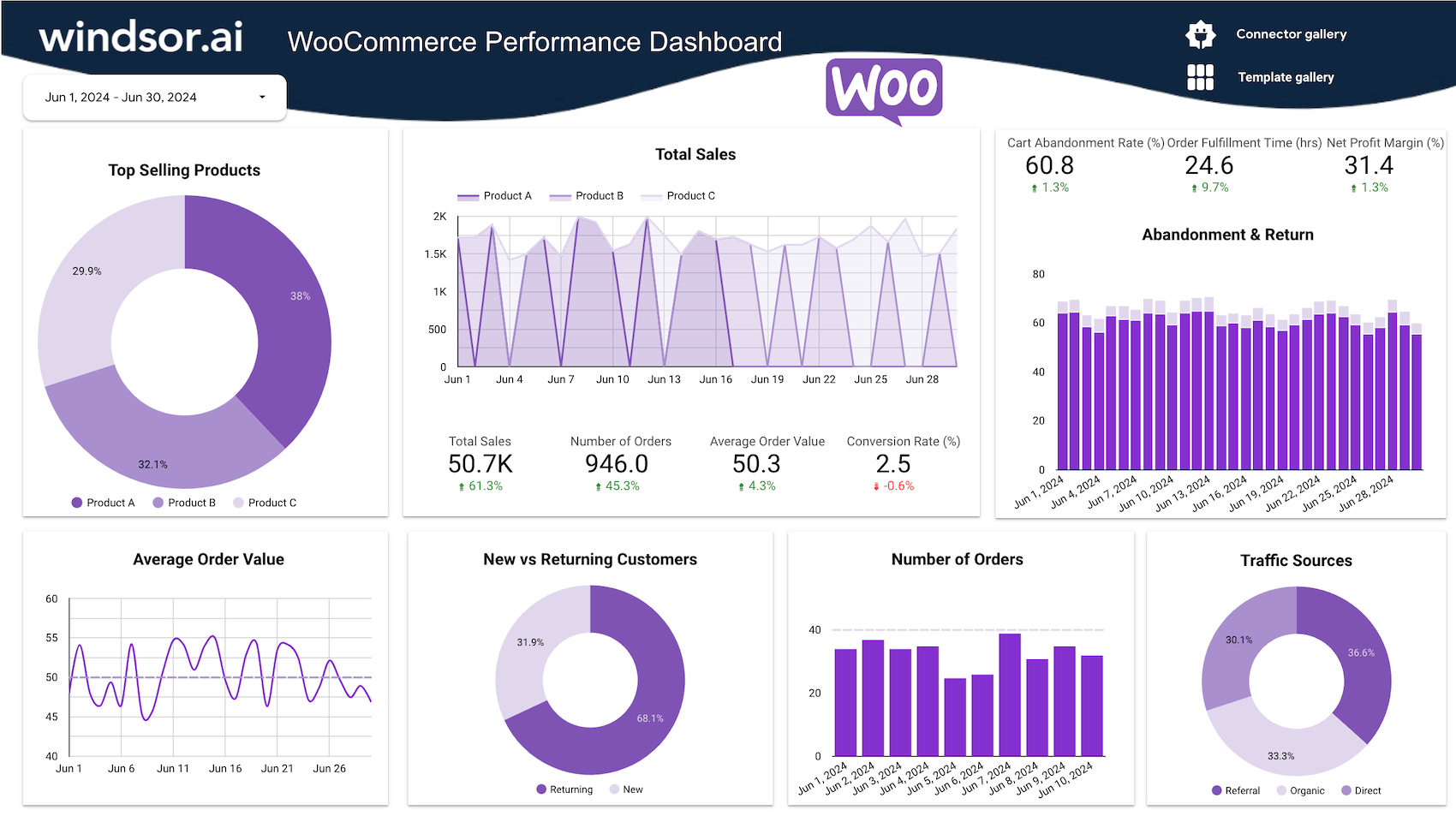
WooCommerce: Complete Buyer's Guide
The customizable ecommerce platform that transforms WordPress sites into powerful online stores with unlimited AI enhancement possibilities.
WooCommerce is the world's most popular open-source ecommerce platform, powering over 28% of all online stores through its WordPress-based architecture and extensive plugin ecosystem.
Market Position & Maturity
Market Standing
WooCommerce maintains dominant market leadership with over 28% of all online stores globally, representing the world's most widely adopted ecommerce platform[47].
Company Maturity
The platform's enterprise-grade stability stems from its WordPress foundation, which powers 43% of all websites globally. This underlying infrastructure provides proven scalability and long-term viability backed by one of the internet's most established content management ecosystems[47][52].
Growth Trajectory
Market maturity indicators include over 5 million active installations, thousands of certified developers, and an extensive marketplace ecosystem with plugins addressing every conceivable ecommerce requirement[47][52].
Industry Recognition
Industry recognition spans widespread developer adoption, enterprise implementation across major brands, and continuous innovation through community contributions[47][52].
Strategic Partnerships
Strategic partnerships include deep WordPress integration, payment processor relationships with major providers, and hosting provider optimization across leading platforms[47][52].
Longevity Assessment
Long-term viability assessment indicates exceptional stability through open-source architecture, massive user base, and established ecosystem[47][52].
Proof of Capabilities
Customer Evidence
A sustainable clothing store achieved 60% reduction in support tickets using StoreAgent's AI automation, freeing resources for strategic growth initiatives[45].
Quantified Outcomes
Octocom reports 90% automated handling of pre and post-sale customer questions, reducing support costs from $5-$10 per traditional query to $0.50-$1 with AI automation[54][46].
Case Study Analysis
Implementation Evidence spans content generation efficiency through WriteText.ai's automated product descriptions, multichannel customer service via Tidio's integrated chatbot capabilities, and dynamic pricing optimization through specialized plugins like Boardfy[42][48][50][44].
Market Validation
Market Validation includes over 5 million active installations globally and 28% market share among all ecommerce platforms, demonstrating widespread adoption and proven reliability[47].
Competitive Wins
Competitive Wins emerge through customization advantages unavailable on closed platforms, cost-effectiveness through open-source licensing, and AI flexibility enabling specialized tool selection based on specific business requirements[44][57].
Reference Customers
Enterprise Adoption evidence includes major brand implementations and scalability proof through high-volume deployments. The platform's WordPress foundation powers 43% of all websites, providing infrastructure validation for enterprise-scale operations[47][52].
AI Technology
WooCommerce's plugin-based AI architecture represents a fundamentally different approach compared to platforms with native AI integration. Rather than building artificial intelligence directly into the core platform, WooCommerce enables businesses to select and integrate specialized AI tools based on specific operational requirements[41][47][52].
Architecture
The platform's open-source WordPress foundation provides unlimited customization possibilities through thousands of available plugins[41][42][48][50].
Primary Competitors
Primary Competitors include Shopify with integrated AI features, BigCommerce offering enterprise-scale solutions, Magento providing advanced customization, and Squarespace targeting ease-of-use[43][47][52].
Competitive Advantages
Competitive Advantages center on unlimited customization potential through plugin-based architecture, cost-effectiveness via open-source licensing, and selective AI tool deployment enabling specialized functionality without paying for unused features[44][47][52].
Market Positioning
Market Positioning targets technically capable businesses prioritizing customization control over operational simplicity. WooCommerce excels for organizations with development resources seeking competitive differentiation through custom AI configurations unavailable on standardized platforms[44][57].
Win/Loss Scenarios
Win/Loss Scenarios favor WooCommerce when businesses require specific AI tool combinations, budget constraints necessitate open-source solutions, or WordPress familiarity enables faster implementation[44][47][52].
Key Features

Pros & Cons
Use Cases
Integrations
Pricing
Featured In Articles
Comprehensive analysis of Store Builders for Ecommerce for Ecommerce businesses and online retailers. Expert evaluation of features, pricing, and implementation.
How We Researched This Guide
About This Guide: This comprehensive analysis is based on extensive competitive intelligence and real-world implementation data from leading AI vendors. StayModern updates this guide quarterly to reflect market developments and vendor performance changes.
59+ verified sources per analysis including official documentation, customer reviews, analyst reports, and industry publications.
- • Vendor documentation & whitepapers
- • Customer testimonials & case studies
- • Third-party analyst assessments
- • Industry benchmarking reports
Standardized assessment framework across 8 key dimensions for objective comparison.
- • Technology capabilities & architecture
- • Market position & customer evidence
- • Implementation experience & support
- • Pricing value & competitive position
Research is refreshed every 90 days to capture market changes and new vendor capabilities.
- • New product releases & features
- • Market positioning changes
- • Customer feedback integration
- • Competitive landscape shifts
Every claim is source-linked with direct citations to original materials for verification.
- • Clickable citation links
- • Original source attribution
- • Date stamps for currency
- • Quality score validation
Analysis follows systematic research protocols with consistent evaluation frameworks.
- • Standardized assessment criteria
- • Multi-source verification process
- • Consistent evaluation methodology
- • Quality assurance protocols
Buyer-focused analysis with transparent methodology and factual accuracy commitment.
- • Objective comparative analysis
- • Transparent research methodology
- • Factual accuracy commitment
- • Continuous quality improvement
Quality Commitment: If you find any inaccuracies in our analysis on this page, please contact us at research@staymodern.ai. We're committed to maintaining the highest standards of research integrity and will investigate and correct any issues promptly.